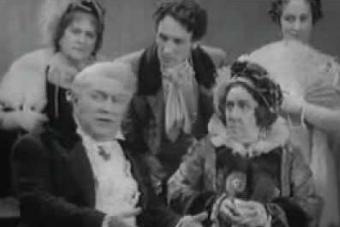Perhaps the most widely known case is that of Van Gogh's severed ear. Of course, this act in itself is not so unique, but the very fact that the famous artist did it, and the mystery that shrouds this incident, still did their job. Now, even the most incurious reader, picking up a book about Van Gogh, will definitely try to find some information about this case.

A small house in the province, or bouts of depression
In 1888, Vincent van Gogh rented a small house in a small southern French town called Arles. There, the Dutch painter, suffering from bouts of depression, experienced periods of madness and torment of creativity. Here he painted several scenes of the French countryside and the famous series of paintings "Sunflowers".

Exhausted by despair and loneliness, Van Gogh hoped for new acquaintances with creative personalities who would provide him with communication, and, perhaps, help reduce his financial dependence on his younger brother Theo, who always supported Vincent Van Gogh. The lonely artist repeatedly turned to his friend Gauguin with a request to join him. And finally, he heeded his prayers. Thus begins the story of Van Gogh's ear.
Entertainment of two friends, or what two artists argue about
On October 23, Paul Gauguin knocked on the door of Van Gogh's small dwelling. They began to study numerous paintings in art galleries, brightened up their leisure time in local brothels. Their relationship was quite stormy. The two Post-Impressionists argued constantly, ranging from household expenses to the merits of Delacroix or Rembrandt.
Paul Gauguin constantly grumbled about the dirt in the studio. What's more, he threw away all of Vincent van Gogh's bedding. And he immediately sent for his own, which were to be delivered directly from Paris. The small house quickly filled with an atmosphere of tension. Paul became increasingly concerned about the state of Vincent, who periodically kept a thoughtful silence, and at times showed intermittent outbursts of insanity. Gauguin often wrote about this in his letters to Theo van Gogh, his friend's younger brother.

Another fit of madness, or a cry of despair
Finally, two days before Christmas, which Van Gogh, by the way, never liked, Paul told him that he planned to return to Paris. In the evening he went for a walk, when suddenly Vincent overtook him from behind and began to threaten him with a razor. Gauguin reassured his friend, but just in case, he spent the night at a nearby hotel. How could Paul then imagine how this decision would affect further events and Van Gogh's ear. Vincent returned to his deserted house. Alone again...
All his dreams for the eternal stay next to him Paul Gauguin were destroyed. In another fit of madness, the artist took a razor, pulled back his left earlobe and cut it off. The torn ear artery began to bleed profusely, and Vincent bandaged his head with a damp towel. But the story about Van Gogh's ear does not end there. The artist carefully wrapped it in a newspaper and went to a brothel located next door, where he found an acquaintance of Paul Gauguin. He handed this bundle to her and asked her to keep it carefully. Seeing the contents, the poor woman fainted, and Van Gogh, staggering, went home.

Van Gogh's ear. Photo of a self-portrait with a bandaged head
The alarmed woman decided to report this incident to the police, and the next morning the artist was found unconscious in bed, covered in blood. He was admitted to a local hospital. Vincent van Gogh repeatedly asked a friend to visit him. But Paul Gauguin never came. Hospitalization continued for several weeks, and then Van Gogh returned to his small house. There he continued to write his works and even documented the last violent episode, which readers know as the story of Van Gogh's ear, in the form of a self-portrait with a bandaged head. Manic attacks continued from time to time, and Vincent van Gogh spent most of the next year in the psychiatric clinic of Saint-Rémy. But the treatment did not save the shattered psyche of the famous artist, and on July 27, 1890, he shot himself.

The most famous moment in life, or what loneliness brings to
What else can be said about Van Gogh's severed ear? The story, which took place on December 23, 1888, remains the most famous fragment from the life of the famous artist. Most of the narrative of those events was compiled from the words of Paul Gauguin, whom the police initially suspected of committing this act. Until now, among art historians and biographers, there is an opinion that in fact the situation looked somewhat different. Most likely, this story served only as a cover that the two artists came up with to protect Gauguin, who cut off Van Gogh's ear with his fencing sword during another quarrel. Considering how desperately Vincent wanted to keep his friendship with Paul, this version can also be believed.

However, the friends never saw each other again. And this story has forever remained an unsolved mystery, which interested not only contemporaries, but also many today's admirers of the talented artist's work. Moreover, it turns out that there is even a song called Van Gogh's Ear. Kashin Pavel, a famous contemporary performer, apparently tried to convey in it the emotions that Vincent van Gogh experienced at the time of this crazy act.
In 1888, the Dutch artist Vincent van Gogh cut off part of his left ear after an argument with the Frenchman Paul Gauguin. This incident is widely known, although the motives of the artist's act are not clear. It is believed that he attacked his friend in a fit of madness caused by the abuse of absinthe. But there was one interesting detail in the whole story that was never quite clear: how badly did the painter hurt his ear?

Van Gogh researchers have always believed that the artist took away only part of the ear - perhaps only the lobe. But while researching Van Gogh's life, a mysterious researcher discovered a drawing made by the attending physician. According to the image, the artist cut off almost the entire ear.

Bernadette Murphy, author of the new book Van Gogh's Ear, found an interesting drawing in the archives of Irving Stone, the American writer who novelized Van Gogh's life story in Lust for Life. Murphy learned that in 1930, Stone went to France in Arles in search of material, where he met with the artist's doctor. He drew Stone a sketch of Van Gogh's ear before and after the artist, in a fit of strong feelings, self-mutilated. This drawing clearly shows that Van Gogh was left with only a small piece of earlobe.

This is the first book by Bernadette Murphy. The future writer was born in Ireland, but for many years she lived in the south of France - in the favorite places of Gauguin and Van Gogh. In an interview, Murphy mentions teaching art history. The publisher characterizes her with the following words: "an ordinary woman who revealed to the world an extraordinary secret."
In Murphy's own words: “I had health problems... I had a lot of free time... I enjoyed unraveling the mystery. This exploration was an incredible adventure... In my little house in Provence, I couldn't believe that I had found something new and important about Vincent van Gogh."

Few people know that in two self-portraits, Van Gogh captured himself with his right ear bandaged, although he cut off his left. Most likely, this is an involuntary deception of the artist, who painted himself looking in the mirror.
It is worth noting that Vincent van Gogh and Paul Gauguin were extraordinary personalities. They experienced the whole gamut of emotions and entered the textbooks on the history of art.
(1853-1890) cut off his ear, every second schoolboy knows. But why - not every adult can explain. Like, he was crazy, strange ...
Vincent van Gogh "Self-portrait with cut off ear", 1888.
This explanation did not suit me even at school, when, at the age of fourteen, I discouraged a young art history teacher with my interest.
It turned out that there are two versions: official and not official. Which one to believe is up to you. Genius is often (if not always) identical to madness. To understand the essence of things that fateful year in the life of an impressionist, you need to visit his dream house - in a yellow two-story building, sunny as summer in Provence. This is what we will do with you now.
Yellow house in Arles
On May 1, 1888, Vincent van Gogh rented a house with bright yellow walls in the French city of Arles. This house was located at 2, Place Lamartine, and Vincent intended to create from it a creative studio not only for himself, but also for other artists. This was his dream, and he repeatedly wrote to his brother Theo about it.

Letter to Brother Theo in which Vincent describes the "Yellow House", 1888.
Vincent had four rooms at his disposal: an atelier and a kitchen on the first floor, two bedrooms on the second. There was a grocery store next door. In a four-story building next to it is a restaurant where Vincent had dinner every evening. At the end of the street there is a railway bridge.

Vincent van Gogh "The Yellow House", 1888
See the window where the shutters are covered? There was our hero's room.

Vincent van Gogh "Room in Arles", 1888. Van Gogh painted his room three times, without changing anything in the composition - only the colors differ. This is the very first version.
The room was small (the window was the only one) and - quite likely - a walk-through: the doors can be seen from both sides. On the walls there is a small mirror, two portraits of his own brush (a portrait of the poet and artist Eugen Boch and a portrait of a soldier Paul-Eugen Millet), a landscape at the head of the bed, and sketches.

Vincent van Gogh "P portrait of the poet Eugen Boch and "Portrait of a soldier Paul-Eugen Millet", 1888.
The rest of the rooms were decorated by the artist much more idly and - to match the color of the house - sunny: bright yellow "Sunflowers". There are seven canvases of them, scattered today in the leading galleries of the world: from London to Japan. These are my favourites.

Vincent van Gogh "Sunflowers", 1889, Philadelphia Museum of Art, USA
friend visit
Now look at the second floor window against the wall (on the canvas "Yellow House" it has the shutters wide open). See?

After Van Gogh's departure, the yellow house housed a bar.
Paul Gauguin (1848-1903), the first (and last) artist to join Vincent in Arles, looked out through this window for nine weeks.

Paul Gauguin "Self-portrait", 1888.
And not for free: Gauguin received "travel allowances" from Theo van Gogh. And it is understandable: unlike Vincent, he was already quite famous.
Vincent did not have time to write a canvas depicting Gauguin's room, but from his letters it is known that the room of the long-awaited guest is larger, brighter and more elegant than his own. And this is what the chairs of the painters looked like. For me, for example, a "crazy" artist is always associated with this chair: bright, simple, sunny. A kind of self-portrait, don't you think?
And Gauguin - with his.

Vincent van Gogh "Van Gogh's Armchair" and "Gauguin's Armchair", 1888.
As expected, the joint creative life soon - namely: two months later - cracked. They say that Vincent could sit down by Paul's bed and study his motionless sleeping body. And all sorts of memories-tales. Be that as it may, it is difficult for two creative personalities to get along under the same roof. Beautiful Frida, if you remember, loved her artist husband Diego with all her heart, at the same time!
One day Paul had enough, Theo unsubscribed and left home.
Then it started...

Paul Gauguin "Portrait of Van Gogh at the easel", 1888.
So why did Van Gogh cut off his ear?
Official version
Vincent, of course, was deeply upset by the departure of Paul: after all, having barely realized, his big dream collapsed. The dream is to create a joint creative studio. His first guest of honor left. He left, hot, offended.
The artist was so agitated that he lost self-control: he cut off his left ear, carefully wrapped it in a white scarf and headed to the brothel to deliver the “package” to Gauguin’s favorite prostitute. (They say she fainted. Of course.)

Vincent van Gogh "Cedar tree and figure in the garden of St. Paul's clinic", 1889.

Vincent van GoghEntrance to the clinic", 1889.
Vincent van Gogh, Clinic Courtyard, 1889.
unofficial version
You are silent. I will be silent too. — Vincent's last words to his "friend" Paul.
In 2009, the book "Van Gogh's Ear: Paul Gauguin and the Oath of Silence" by Hans Kaufmann and Rita Wildegans was published. In it, Hamburg historians, who have been studying police files, eyewitness accounts and the artist’s letters for ten years, are trying to prove that the ear “suffered” during a heated quarrel between two artists. According to their version, the artists were heading to a brothel when, in a fit of anger or self-defense, the excellent swordsman Paul Gauguin swung his sword at Vincent. Further - everything according to the scenario of the official version: with an ear in a scarf, Vincent trudged to a brothel to his beloved Gauguin prostitute, and then bled to death in his radiant house, until the police found him, almost alive, the next morning.
“You are silent. I, too, will be silent" - this was the last known phrase, said by Vincent to "friend" Paul. Historians believe that it was because of this vow of silence that Vincent took all the blame. Gauguin did not want to testify at all ...

Vincent van Gogh "Olives", 1889.
Since 1944, the yellow house has existed only on Van Gogh's canvas. During the Second World War, Arles was heavily bombed, in place of the yellow house - new buildings.

Historians Hans Kaufmann and Rita Wildegans have found new evidence that Dutch Post-Impressionist painter Vincent Willem van Gogh's suicide may have been caused by a quarrel with his friend Paul Gauguin - no less famous master of the same direction. The newspaper Telegraph tells about the hypothesis of scientists from Hamburg.
The book by Kaufmann and Wildegans, titled "In Van Gogh's Ear: Paul Gauguin and the Pact of Silence", is dedicated to the ill-fated episode with a cut off ear that occurred two years before the artist's suicide. On the night of December 23, 1888, Van Gogh appeared at the house of brothel and handed his ear to one of the girls with the words: “Take care of it like the apple of your eye,” after which he disappeared.The next morning, the police found the artist at home with almost no signs of life.
It is believed that Van Gogh, being an unbalanced and suicidal person, quarreled that day with his friend Paul Gauguin, with whom he rented a house together. The Dutchman allegedly attacked the French painter with a razor, but he was lucky enough to dodge and run away. Then Van Gogh, in despair, slashed his own ear, cutting off, however, only the lobe.
Kaufman and Widelgans explain this incredible act differently. According to them, on that day Gauguin was about to leave the rented house in Arles, for which he gathered his belongings, including a fencing mask and a sword, and headed towards the brothel. On the way, Van Gogh overtook him, who shortly before launched a glass at a friend. A quarrel broke out between them, and Gauguin, an excellent swordsman, drew his sword for self-defense. It was with this weapon, later thrown into the river, that he cut off part of Van Gogh's ear, and in his defense he made up a story with madness.
As confirmation, scientists cite one of Van Gogh's last letters to Paul Gauguin. It contains the following words: "You are silent - and I will be silent too." Historians see this as an allusion to the "non-disclosure pact" concluded between former friends: Van Gogh is silent about the fact that he was wounded, and Gauguin does not cover the quarrel that preceded this. In addition, scientists cite as evidence a drawing of an ear made by Van Gogh, with the Latin signature "ictus" - this term means a blow in fencing. “In 1888, Van Gogh was already suffering from nervous attacks, but was not yet mentally ill. However, the shock, which plunged him into a quarrel with a friend and an injury, caused him a worsening of the disease, which two years later led to suicide, ”explains Hans Kaufmann.
Van Gogh shot himself on July 27, 1890, after his mental crisis had been overcome in medical terms. Ironically, shortly before this, the artist was discharged from the clinic with the conclusion: "Recovered." The gun, which he pointed at his chest, was used by him to scare away crows while working in the open air. After the fatal shot, Van Gogh lived for two more days, was surprisingly calm and steadfastly endured suffering.






